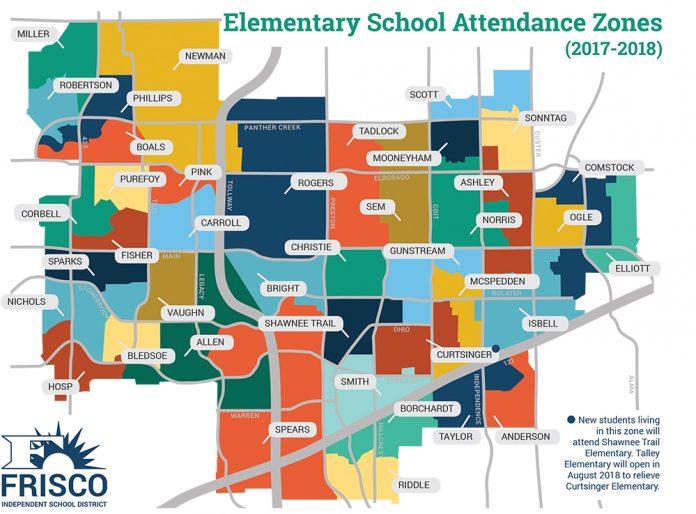How Zoning Policies Shape Educational Inequality in America
The recent report from the U.S. Congress Joint Economic Committee, titled “Zoned Out: How School and Residential Zoning Limit Educational Opportunity,” exposes the profound influence that zoning regulations have on educational access. It reveals how the intersection of residential and school district boundaries perpetuates disparities, often confining students to under-resourced schools based solely on their place of residence. As educational gaps widen nationwide, this analysis highlights zoning as a critical factor sustaining systemic inequities and calls for urgent policy reforms to guarantee fair learning opportunities for every child in the United States.
Understanding Zoning as a Barrier to Fair Education
Originally intended to organize urban growth, zoning laws have evolved into mechanisms that reinforce educational segregation by linking school attendance zones to residential patterns. These regulations often restrict students from economically disadvantaged neighborhoods from enrolling in higher-performing schools located in wealthier communities. Consequently, a child’s academic prospects are frequently dictated by their neighborhood rather than their abilities or ambitions.
Several key ways zoning laws contribute to educational inequity include:
- Residential segregation: Zoning ordinances maintain economic and racial uniformity within neighborhoods, shaping the demographic makeup of local schools.
- Funding disparities: Because school budgets rely heavily on local property taxes, affluent areas can provide superior facilities and programs compared to underfunded districts.
- Restricted school choice: Rigid attendance boundaries limit families’ options, preventing many students from accessing better educational environments outside their zones.
| Area of Impact | Resulting Inequality |
|---|---|
| Housing Zoning | Creates segregated communities |
| School Attendance Boundaries | Limits access to quality schools |
| Funding Linked to Local Taxes | Unequal distribution of educational resources |
Residential Segregation’s Role in Unequal School Funding
The segregation of neighborhoods by income and race directly translates into vast disparities in school funding, which profoundly affects educational quality. Since public schools in the U.S. depend largely on property tax revenues, districts in affluent areas generate significantly more funds, enabling them to offer modern facilities, advanced technology, and attract experienced teachers. In contrast, schools in predominantly low-income or minority neighborhoods often suffer from chronic underfunding, resulting in overcrowded classrooms, outdated textbooks, and fewer extracurricular activities. This funding gap perpetuates cycles of disadvantage and limits social mobility for students from marginalized backgrounds.
Notable consequences of this funding imbalance include:
- Unequal access to resources: Wealthier districts benefit from enhanced educational investments.
- Challenges in retaining quality teachers: Underfunded schools struggle to hire and keep skilled educators.
- Achievement disparities: Funding differences correlate strongly with lower test scores and graduation rates in disadvantaged areas.
| Neighborhood Type | Average Property Tax Revenue Per Student | Student-Teacher Ratio | Facility Quality Rating* |
|---|---|---|---|
| High-Income Suburb | $16,200 | 14:1 | Excellent |
| Middle-Income Urban | $8,300 | 20:1 | Fair |
| Low-Income Minority Community | $3,900 | 27:1 | Poor |
*Facility Quality Rating considers building age, maintenance status, and technology access.
Essential Policy Reforms to Break Down Zoning Inequities
Addressing the deep-rooted inequities embedded in zoning requires comprehensive policy changes that dismantle exclusionary practices historically disadvantaging low-income and minority populations. Central to these reforms is the adoption of inclusionary zoning policies that require affordable housing developments across diverse neighborhoods. This strategy disrupts the cycle of economic and educational segregation by enabling families from varied socioeconomic backgrounds to reside near high-quality schools. Additionally, revising or eliminating single-family zoning restrictions can increase housing diversity and reduce neighborhood homogeneity, fostering more integrated educational environments.
To ensure these reforms are effective and equitable, transparent oversight and accountability must accompany zoning changes to prevent covert discriminatory tactics. Key reform measures include:
- Enforcing fair housing laws with strict penalties for discriminatory zoning decisions.
- Boosting public investment in schools located in historically underfunded areas to equalize educational opportunities.
- Promoting mixed-income housing developments to cultivate inclusive communities.
- Reforming school assignment policies to reduce dependence on residential location for school access.
| Policy Initiative | Anticipated Outcome |
|---|---|
| Inclusionary Zoning | Expands affordable housing near quality schools |
| Reform of Single-Family Zoning | Increases housing variety and access |
| School Assignment Policy Changes | Reduces educational disparities |
| Fair Housing Enforcement | Prevents discriminatory zoning practices |
Innovative Approaches to Broaden Educational Access
To effectively expand educational opportunities, it is crucial to address the intertwined challenges of residential and school zoning that sustain segregation and inequality. Experts advocate for decoupling school attendance zones from residential boundaries to provide students from underserved areas with access to better schools. Programs such as controlled choice and regional enrollment have demonstrated success in fostering socioeconomic diversity and balancing resources without displacing families.
Equally important is investing in infrastructure and transportation to support these reforms. Enhancing affordable and reliable transit options can reduce obstacles for students attending schools outside their immediate neighborhoods. Furthermore, targeted funding aimed at upgrading school facilities and technology ensures that students who gain access to higher-performing schools have the tools needed to succeed academically. Effective strategies include:
- Implementing statewide policies that promote equitable zoning practices.
- Increasing flexibility in district boundaries to facilitate cross-community enrollment.
- Providing transportation subsidies to low-income families to ease commute challenges.
- Engaging local communities to ensure reforms align with their unique needs and priorities.
| Strategy | Goal | Expected Benefit |
|---|---|---|
| Controlled Choice Programs | Enhance socioeconomic diversity | Better academic outcomes and reduced segregation |
| Regional Enrollment Zones | Redefine school boundaries | More balanced school populations and shared resources |
| Transportation Subsidies | Lower commute barriers for disadvantaged students | Increased attendance and engagement |
Conclusion: Moving Toward Equitable Education for All
The Joint Economic Committee’s report offers a critical examination of how current residential and school zoning policies entrench educational disparities across the United States. By legally restricting access to quality education based on geographic location, these zoning frameworks perpetuate socioeconomic and racial divides, limiting opportunities for millions of students. As policymakers and communities consider reforms, this analysis underscores the urgent need to dismantle zoning barriers to create a more just and inclusive educational landscape. While the dialogue on zoning and education reform continues, this report lays a vital foundation for informed, impactful policy change that can transform educational equity nationwide.




